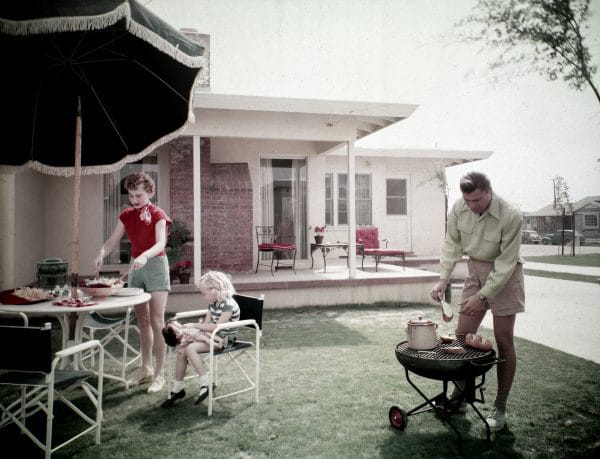These are the perennial signs of a suburban summer: the smell of hot dogs on the grill, the sound of a mower on a Saturday afternoon, pool parties and get-togethers on the patio.
Through rare photographs, historic drawings and period advertisements, Patios, Pools, & the Invention of the American Backyard explores the mid-century backyard of the 1950s from the rise of the suburbs and tract houses and the beauty of postwar garden design to the birth of the environmental movement. Drawing from the collections and research of the Smithsonian Gardens’ Archives of American Gardens, the exhibition is organized for travel by the Smithsonian Institution Traveling Exhibition Service (SITES).
In the 1950s, America was a nation emerging from the shadow of World War II, searching for ways to enjoy its newfound peace and prosperity. Postwar trends such as the baby boom, a growing middle class, the do-it-yourself concept and a dramatic rise in home ownership remade much of the U.S. and contributed to the development of the suburban backyard. The mid-century backyard became an extension of the house, a room designed for relaxing, recreation and entertaining. Private backyard pools were an affordable luxury for many, and the patio became the perfect place for a backyard grill and patio furniture made with new materials like plastic and aluminum.
Companies produced an increasing number of products designed to lessen the burden of yard work. Imported and hybrid grasses, herbicides and pesticides, automated sprinkler systems, chemical sprayers and newly affordable lawn mowers began to appear in sheds and garages around the nation. Many contemporary backyards still boast the pristine lawn, low-maintenance plantings, patios, outdoor furniture, grills and play equipment that first emerged after World War II.
Patios, Pools, & the Invention of the American Backyard is presented by the Smithsonian Institution Traveling Exhibition Service and the Smithsonian Gardens’ Archive of American Gardens. It will be on view at the Park City Museum June 15, through November 20, 2019.
